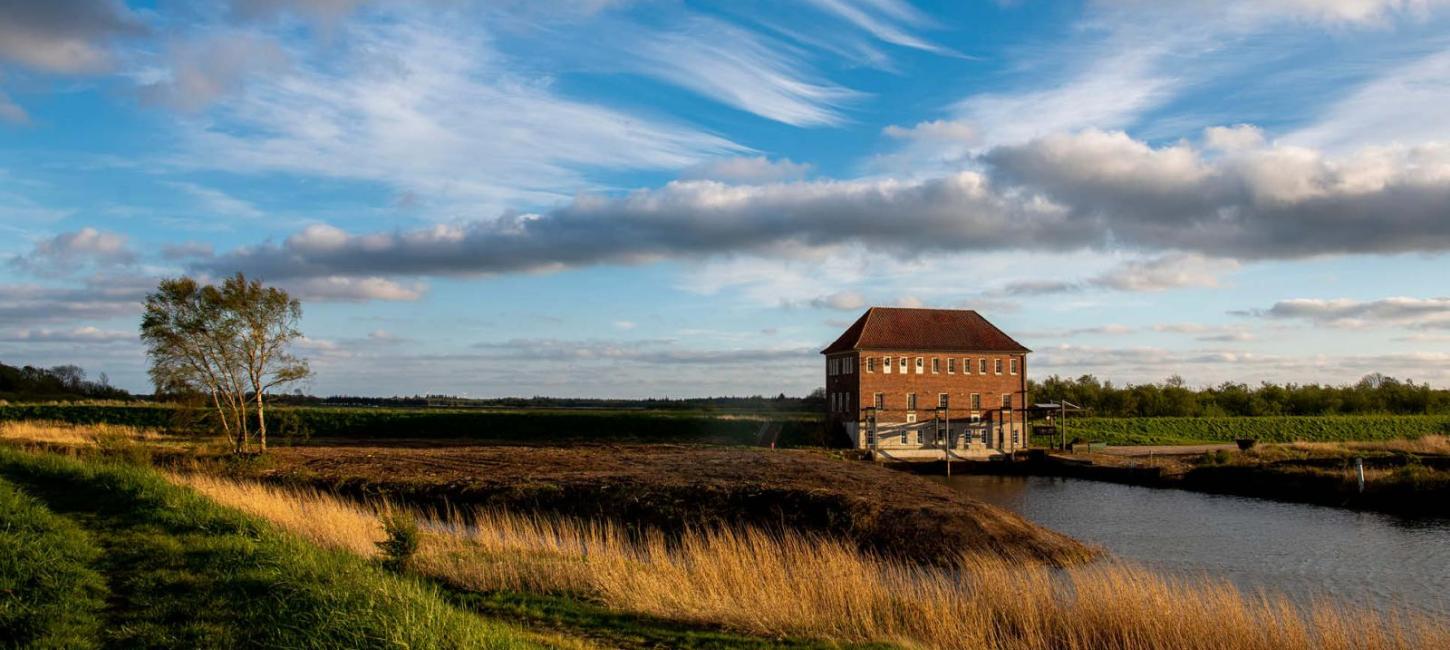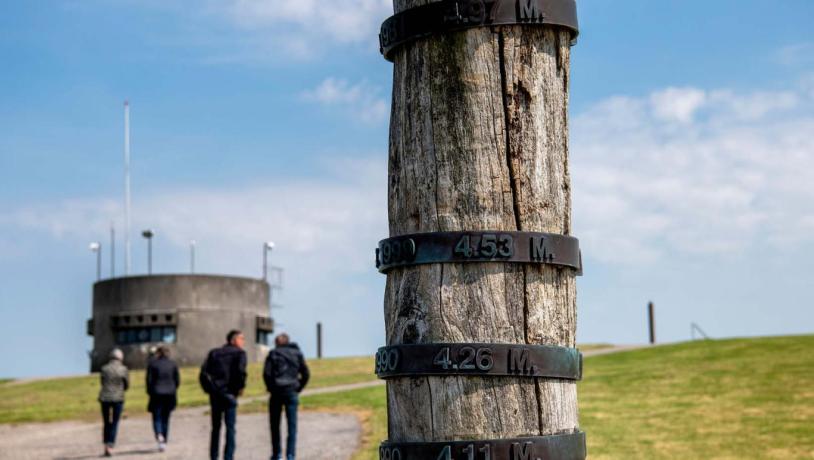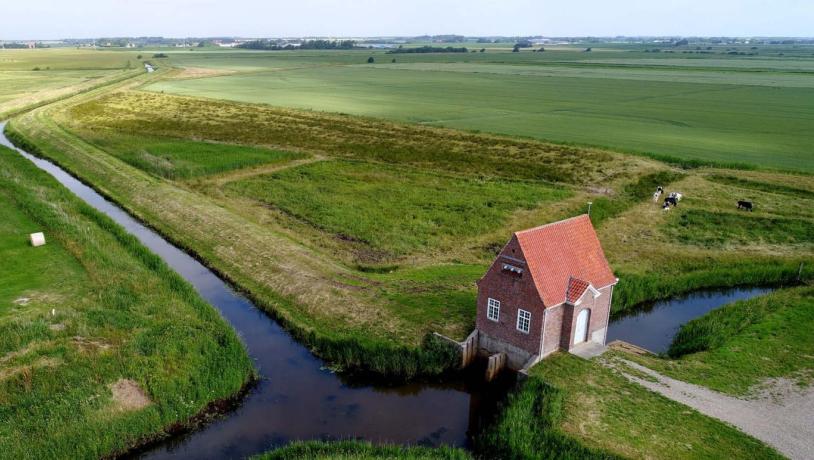
The battle against the water
In earlier times, the inhabitants of the marshes in western Sønderjylland had to live with the ever-present risk of flooding. Thanks to dykes, locks and pumping stations, however, this risk has been more or less eradicated, and today inhabitants in the region live in harmony with the sea.
The landscape looks peaceful and inviting when you gaze out over the flat expanse of canals, fields and hundreds of grazing sheep, with a glimpse of the Wadden Sea in the distance. The conditions haven’t always been as peaceful as they appear today, however. Here in the western corner of Sønderjylland, the battle against the water has always been an arduous and sometimes deadly struggle.
This is not least due to the fact that the landscape in this region is very flat. So when a storm rages from the west, it brings with it huge quantities of water. In the old days, storm surges often resulted in major flooding, which unfortunately cost the lives of many people and – not least – animals.
In order to protect themselves against flooding, the local population began building dykes as early as the 16th century. More have been constructed since, with the latest dyke – Det Fremskudte Dige – being completed as recently as 1981. This dyke primarily protects Tøndermasken against flooding. In 1976, Tøndermarsken was almost completely flooded by two powerful storm surges, which led to the decision to construct Det Fremskudte Dige.


Drainage
Pumping stations are another important means of preventing flooding. They help to pump rainwater from low-lying areas in the marsh into the many watercourses that criss-cross the area, thus draining the fields.
There are four pumping stations in Tøndermarsken, of which Lægan Pumpestation is the largest. This pumping station is open to the public and can be visited all year round.
The third key to taming the power of the sea are locks. They are highly effective in terms of regulating water levels, with the most important lock being found at Vidåslusen. This makes up part of Det Fremskudte Dige and is located where the stream of Vidåen runs out into the Wadden Sea.
Via locks which can be opened and closed, water from Vidåen can run out into the Wadden Sea and thereby drain the marsh. When the water level is higher in the Wadden Sea than in Vidåen, the locks can be closed, thus preventing seawater from running into the stream.
The locks open and close automatically today, including twice a day as the Wadden Sea shifts between high tide and low tide. You can get a good insight into coastal protection in the region by going for a walk on the dyke, Det Fremskudte Dige, near the lock at Vidåen.


Safe and sound
Thanks to dykes, locks and pumping stations, the inhabitants in the area today only need to be aware of high water levels when storms blow in from the west, whilst they don’t have to worry about flooding. This situation may not last forever, however: the UN’s climate panel predicts a rise in sea levels in the future, which will of course put existing dykes under greater strain. At the same time, the number of storm surges has increased considerably in recent decades, so dykes will also have to prove their worth more frequently than before.
A close eye is therefore kept on the condition of the dykes in the area, in addition to which consideration is given to whether the height of the dykes will need to be raised in the future. As a result, everyone who lives and works in the marshes today can continue to go about their business in the area confident of remaining safe and sound.
Stream dykes
So-called stream dykes, which are lower and run alongside streams, were constructed in connection with the drainage of Tøndermarsken during the period 1927-1930. Without the dykes lining the stream, draining wouldn’t work, as the dykes ensure that the water stays in the stream when it’s pumped up from the canals in low-lying areas of the marsh.
Without the stream dykes and the pumping stations, Tøndermarsken would be flooded – not by seawater being forced in from the west, but by rainwater that falls in the area stretching from the lock in the west to the motorway running through the middle of Sønderjylland. This makes up a catchment area of some 1,341 km2, from where all rainwater must pass out through the lock at Vidåen. This lock is subject to a maximum load of more than 200,000 l/s, which is the equivalent of 500 bathtubs full of water passing through the lock every second. If the locks are closed due to pressure from the Wadden Sea, the water from the streams – the so-called backwater – cannot escape. The streams would then quickly overflow their banks and flood Tøndermarsken if there weren’t any dykes lining the streams.
Climate protection
Despite the dykes lining the streams, the backwater still carries with it a risk of flooding. In the event of large amounts of rainfall during an extended period combined with strong winds from the west, backwater quickly accumulates. As a result, climate protection is implemented at several places in Tøndermarsken, including in low-lying areas, where the water can be stored until the locks open once more. Such a storage area can be seen in Margrethekog Syd, which lies just south of the lock at Vidåen.





